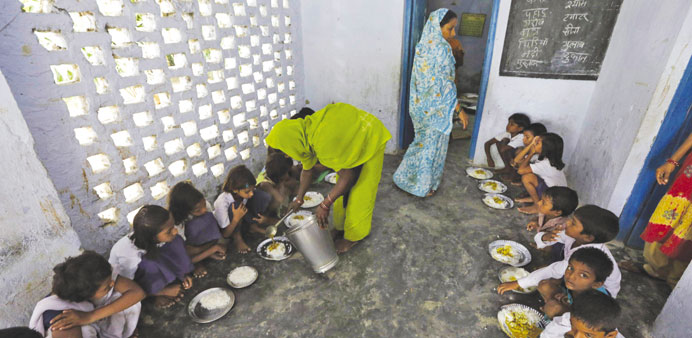“The government could ask banks to raise interest rates to attract an additional $15bn-20bn”
Reuters/New Delhi
The government aims to call on its millions of non-resident citizens to help reverse a record slide in the rupee, dismissing for now the idea of a global sovereign bond, senior government officials said yesterday.
Acknowledging the country faced a dilemma, the officials said India was running out of options and time to revive the currency and fund a record current account deficit but equally it was wary of sending any distress signals to international markets.
Issuing a global bond might send such a signal, so instead policymakers will focus on attracting funds from Indians living abroad, such as by raising deposit rates in India or issuing bonds specifically designed for them - repeating measures carried out in 1998 and 2000 to steady a weak rupee.
The officials said an increase in central bank policy rates and allowing select firms to raise capital overseas were also being considered.
“All have agreed that it is not a time for India to issue sovereign bonds at this stage,” one official said, adding that the central bank agreed with that position too.
“We do not have much options. Whatever has to be done, will be done in the next few weeks,” the official said. “We have a window of only few weeks,” he said.
“The government could ask banks to raise interest rates to attract an additional $15bn-20bn,” he said.
The news prompted the 10-year benchmark 7.16%, 2023 bond yield to jump eight basis points to 8.08%, while the rupee ticked lower on the news that a global bond was not being considered right now.
India has the second-largest diaspora in the world, with a community estimated at more than 25mn, the ministry of overseas Indian affairs said.
Non-resident Indians (NRIs) already hold more than $100bn in funds in India. Central bank figures show NRIs held $58bn in dollar deposits as of September 2012, plus local currency deposits worth 3tn rupees ($50.3bn).
Since the rupee’s rapid decline, inflows of money from NRIs have risen, the government official said.
The currency traded at around 59.70 per dollar yesterday - to be about a percent above its record low of 61.21 hit on July 8.
The rupee has steadied somewhat since the Reserve Bank of India (RBI) took unprecedented steps last week to try to create demand for the currency by aggressively draining cash from money markets and sharply raising short-term interest rates.
Some of the rupee’s fall - 12% since May - reflects a broader selloff in emerging markets on signs of a winding down of US stimulus. But there are also specific fears about India’s slowing economy, a lack of substantive reforms and its large current account deficit. That is reflected in foreign fund outflows from India’s debt and equity markets since late May of $11.5bn.
“The government must be weighing the pros and cons of various options available to them, which would be most effective in attracting capital,” said Upasna Bhardwaj, economist with ING Vysya Bank in Mumbai.
Options include the issuing of NRI bonds and encouraging state-run firms to raise foreign debt, she said. “If attractive yields are provided, any of these options could be successful.”
Chief economic adviser Raghuram Rajan told reporters that the government “has not dropped any options” for stabilising the rupee.
India has taken some steps this year to try to attract foreign investment, such as easing registration rules and increasing ownership limits for long-term investors such as sovereign wealth funds. Measures from the Indian stock market regulator aimed at curtailing speculative positions against the currency gave it some reprieve, but market participants are bracing for a rise in policy rates or other aggressive measures to attract foreign money.

